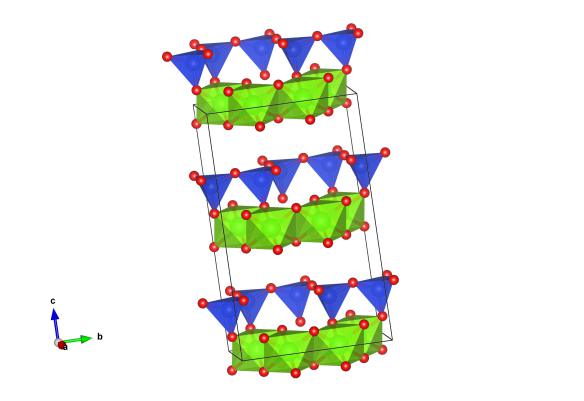Fancy a wrestle? – Kaolinite
What does it look like?

Image generated by the VESTA (Visualisation for Electronic and STructural analysis) software http://jp-minerals.org/vesta/en/
What is it?
Clay minerals are made up from layers of silicate (silicon and oxygen) and layers of metal oxide, which are sandwiched together with water. They are part of a group of layered silicate minerals, called phyllosilicates (the name has the same origin as filo or phyllo pastry!). These layers can swell up and take in many things from their surroundings.
Kaolinite is one of the simplest phyllosilicates, made up of repeating silicate (blue tetrahedra) and alumina (green octahedra) layers. It's often the mineral used in clay masks. The layers in the structure can then grab the moisture from our skin and suck it in, along with all the grub and grime. The layers within kaolinite also make the materials very soft and slippery, which is why they are nice to put on your skin and are the main type of 'mud' used in mud wrestling
Where did the structure come from?
The structure of Kaolinite is #9009230 in the Crystallography Open Database.






